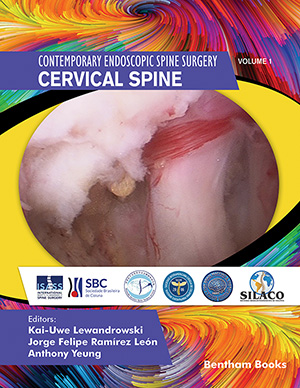Abstract
The challenges of decompression surgeries performed in the cervical spine for degenerative spinal disease are 1) the avoidance of injuries to vital structures, 2) prevention of neurological deterioration, or deficit 3) preservation of cervical segmental stability to avoid post-decompression kyphosis 4) adequate decompression of neural structures. Endoscopic spine surgery optimizes two essential aspects of minimally invasive spine surgery: optimal visualization and minimal soft tissue damage. Despite using a small diameter endoscope, the proximity of exiting nerve root, spinal cord, and pedicle to the intervertebral disc make posterior endoscopic cervical foraminotomy and discectomy difficult. To remove the disc without significant neural retraction, our technique of full endoscopic partial pediculotomy, partial vertebrotomy posterior endoscopic cervical foraminotomy and discectomy (PECFD) allows the creation of a subneural working space for the endoscopic equipment to reach the prolapsed disc or hypertrophic uncovertebral joint. This chapter describes this technique and its clinical pearls to perform PPPV PECFD safely and efficiently.
Keywords: Cervical radiculopathy, Degeneration, Full endoscopic partial pediculotomy, Partial vertebrotomy technique.






















